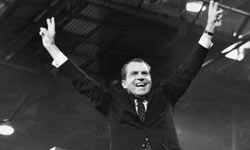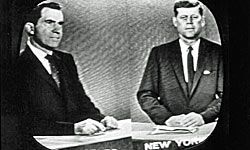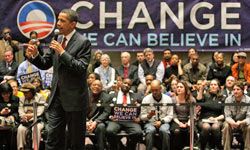In 1952, a politician faced with a potential scandal made what must have seemed like a radical decision. He decided to address the nation -- on television. That politician, Richard Nixon, wasn't running for president yet. Nixon's address was a Hail Mary attempt to keep his spot on the Republican ticket with nominee Dwight Eisenhower in the wake of a major scandal. Having been accused of misusing campaign funds to fatten his salary, Nixon looked directly into the eyes of the American public and told them he'd never accepted a gift. Sitting next to his wife, and telling a heartwarming story about a dog named Checkers that a supporter had given to his children, Nixon won the viewers over. Later that year, he and Eisenhower won the presidential election. Nixon would have his own problems with TV later, but the Checkers speech secured the future of his political career and marked a change in the way American politicians would campaign going forward [source: Donovan].
Believe it or not, there was a time in American politics when it was seen as uncouth for presidential candidates (especially incumbents) to campaign. They might make some public addresses at campaign rallies, but for the most part they left the campaigning to the political parties and their staffs [source: CNN All Politics]. With the rise of television, campaigns were driven more and more by the candidates themselves. But that's only the beginning of TV's transformation of the American presidential election. Read on to find out how the "idiot box" changed the way leaders are chosen.
Advertisement


